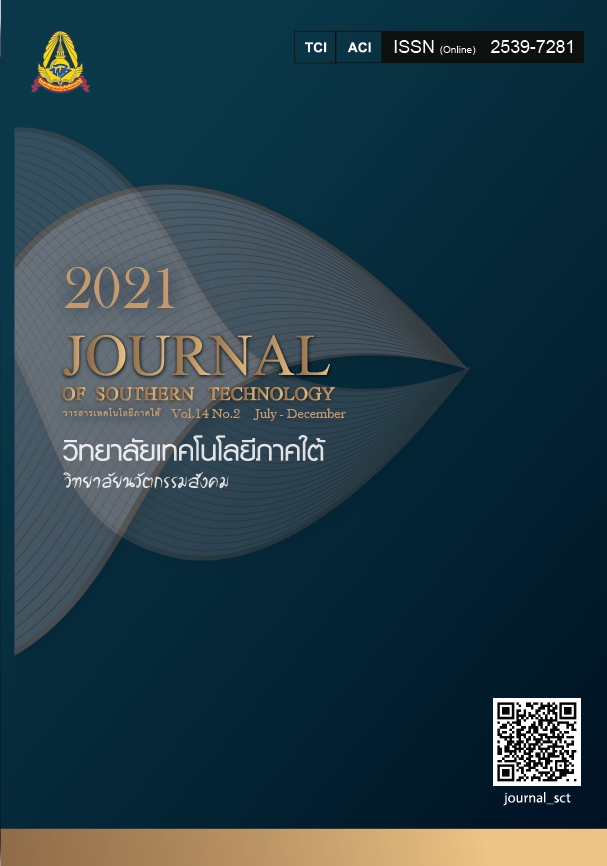Factor Analysis: Problems in Conducting Research on Bachelor of Business Administration Students, Northern Rajabhat University
Main Article Content
Abstract
Research is one of the required courses for undergraduate students in business administration at Northern Rajabhat University. It allows the students to go through various stages of conducting research. Therefore, problems can arise during this process, from defining research issues, instruments to translating results and discussing the findings. This research aims to analyse factors concerning problems that business administration majors face in conducting research. Data were collected from questionnaires completed on reliability test at 0.971 by a specific sample of 729 students who have studied research classes or are
studying research lessons from Northern Rajabhat Universities. The statistics used to analyze the data were mean, standard deviation. And factor analysis. A total of 686 completed questionnaires can be
analyzed. This research found that problems of conducting research consist of two factors. One is factor of
defining research issues and the other is of research operation. The data were also analyzed for both CFA with continuous factor indicators and second-order factor analysis and the same two components were found. Data Collection is the most problematic in conducting research, followed on insufficient research data via electronic media and data analysis respectively. The findings reflect the bachelor of business
administration curriculum of Northern Rajabhat Universities should review and support students’ data
collection in order to ensure that their research process is effective and efficient. In addition, the research database should be sufficiently enhanced through electronic media and enhance the skills to analyze
research data so that students have adequate databases, as well as to establish the skills to analyze
research data properly and appropriately.
Article Details
-
Authors must agree to the journal publication rules and allow the editors to edit the manuscripts for publication.
-
Author’s right belongs to the author but Journal of Southern Technology holds the right of first publication and thus allow readers to use the article for the purpose of education but not commercial.
References
Aaker, D.A., Kumar, V., & Day, G. S. (2001). Marketing Research (7th ed.). New York: John Wiley and Sons.
Burns, N., & Grove, S. K. (1993). The Practice of Nursing Research: Conduct, Critique, & Utilization (4th ed.). Philadelphia: W.B. Saunders Company.
Cooper, D. R. & Schindler, P. S. (2014). Business Research Methods (12th ed). New York: McGraw-Hill
Goffin, R. D. (2007). Assessing the adequacy of structural equation model: golden rules and editorial policy. Personality and Individual Differences, 42, 831-839.
Hair, J. F., Black, W. C., Babin, B. J., & Anderson, R. E. (2010). In Global (7th ed). Multivariate Data Analysis: A Global Perspective. New Jersey: Pearson.
Kelloway, E.K. (2015). Using Mplus for Structural Equation Modeling; A Researcher’s Guide. CA: Sage Publications.
Kerlinger, F. N. (1986). Foundations of Behavioral Research (3rd ed.). USA: Hort, Rinehart and Winson. Khwannan, J. (2016). A Study of the Problem of Research Conducting and Development Guidelines of Research Quality of Graduate Diploma in Teacher Profession of Students of Faculty of Education, Kamphaengphet Rajabhat University, The 3rd National Conference, Kamphaengphet Rajabhat University, 60-68.
Likert, R. (1932). A technique for the measurement of attitudes. Archives of Psychology, 140, 1-55.
Thabwichian, N. (2018). Problems and Guided Development the Library of Secondary School in Banbung District Chonburi Province under Secondary Educational Service Area Office 18 (Master’s Thesis). Burapaha University. [in Thai]
Supantawee, S., & Chairatana, P. (2018). Problems and obstacles in thesis writing for the political science graduate students in master of arts special program, Kasetsart University. Journal of Interdisciplinary Research: Graduate Studies, 7(1), 198-203.
Steiger, J. H. (2007). Understanding the limitation of global fit assessment in structural equation modeling. Personality and Individual Differences, 42, 893-898.

